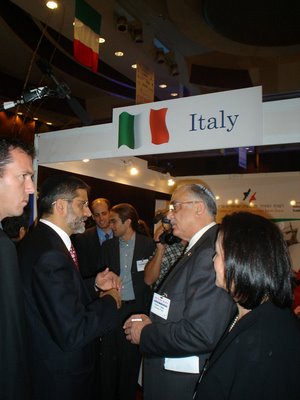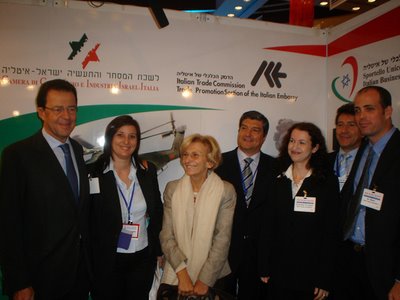martedì 14 novembre 2006
Gateway 2006
Che cos'è Degania?
Degania Alef was founded in 1909 by seven Second Aliyah Halutzim (Halutz), who came from Rumania, on land acquired by the Jewish National Fund. Although the economically successful as a settlement, the group dispersed a year later. In 1911, the place was resettled by a group of pioneers from Russia known as the "Hadera Commune".
Degania Alef was the first settlement based on communal living and became known as the "Mother of the kevutzot". Members of Degania Alef insisted on maintaining the frame of the small kevutzah, as opposed to the bigger collective settlement - the Kibbutz - and therefore, in 1920, with the coming of Third Aliyah pioneers, Degania Bet was founded. In 1932, part of the land was granted for a third collective settlement - kibbutz Afikim.
 During the War of Independence, the Syrian army reached the gates of Degania Alef, but was bravely repulsed. A burnt Syrian tank remains on the site as a memorial. The two Deganias have a combined population of nearly 1,000. Due to the hot climate and abundance of water, both Deganias are engaged in fully irrigated farming. Degania Bet has also a metal factory
and Kadish Luz were members of Degania Bet. A.D. Gordon, Arthur Ruppin, Otto Warburg and other founders of the labor settlement movement are buried on Degania Alef.
During the War of Independence, the Syrian army reached the gates of Degania Alef, but was bravely repulsed. A burnt Syrian tank remains on the site as a memorial. The two Deganias have a combined population of nearly 1,000. Due to the hot climate and abundance of water, both Deganias are engaged in fully irrigated farming. Degania Bet has also a metal factory
and Kadish Luz were members of Degania Bet. A.D. Gordon, Arthur Ruppin, Otto Warburg and other founders of the labor settlement movement are buried on Degania Alef.



Nessun commento:
Posta un commento